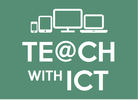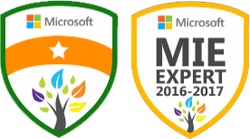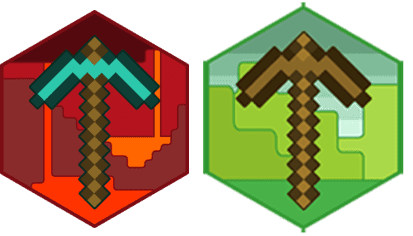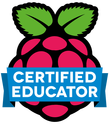|
With the Controlled Assessment out the way and everyone back safely from their Geography field trip, I decided to let my students relax a little (only a little mind!) and have a go at doing some programming using Python and Minecraft Pi Edition. Lesson Suggested time: 50-100 mins What you will need For each student / group, you will need:
Note: This lesson assumes that students already have some experience of using the Pis and that they have already installed the Raspbian Operating System. To find out how, click here Starter I got students to load their Pis and gave them a copy of the minecraft pi installer files including instructions how to install. You can find the instructions here: http://pi.minecraft.net Activity 1: After all of the students had installed Minecraft Pi edition onto each of their Pis, I gave them a little time to play around with minecraft and get to know the controls. To launch Minecraft Pi Edition on the Pi: Open an LX Terminal session: then, type in the command:
cd mcpi to change to the Minecraft Pi Edition game directory followed by: ./minecraft-pi Activity 2 After about 20 minutes or so of playing around, I invited the students to the front of the class and demonstrated the “Hello Minecraft World” script in Minecraft Pi Edition (click here) I then explained to class that they were going to do some programming in Minecraft using Python. I started by giving each student a copy of the “Hello Minecraft World” python tutorial and asked them to attempt the first task. Those students who completed the task early were instructed to attempt the “Placing blocks” task. Once the students had got to grips with the “Hello Minecraft World” tutorial, I then gave each student a copy of the “Python programming using minecraft pi” student booklet and instructed them to attempt each of the tasks. Plenary: To finish the lesson, I asked for a few volunteers to demonstrate some of their code. (Tip: Ensure that you allocate enough time at the end of the lesson for students to pack away the equipment!). Resources: http://pi.minecraft.net - Installation instructions and download link for Minecraft Pi edition http://www.piprogramming.org/main/?page_id=261 - An introduction to programming Minecraft Pi edition. http://arghbox.wordpress.com/2014/04/25/minecraft-pi-recipe-cards - Python recipe cards for Minecraft Pi http://arghbox.wordpress.com/2013/06/13/programming-minecraft-pi-with-python-early-draft - Programming minecraft pi with python (early draft) http://arghbox.files.wordpress.com/2013/06/minecraftbook.pdf - Python programming / Using minecraft pi and codeacademy (Student booklet) http://arghbox.files.wordpress.com/2013/06/teacheredition.pdf - Python programming / Using minecraft pi and codeacademy (Teacher instructions) http://www.codecademy.com - Great start for learning Python http://www.raspberrypi.org/learning/minecraft-pi/ - Getting started with programming the Minecraft world Comments are closed.
|
AuthorSimon Johnson Microsoft Innovative Educator Expert / MIE Trainer
Minecraft Cert. Educator / Global Mentor
CAS Master Teacher
Raspberry Pi Cert. Educator
Tickle Ambassador
Archives
June 2017
CategoriesAll Algorithms Cpu Fundamentals Hardware Input & Output Memory OCR A451 Software Storage |
Search by typing & pressing enter







 RSS Feed
RSS Feed
